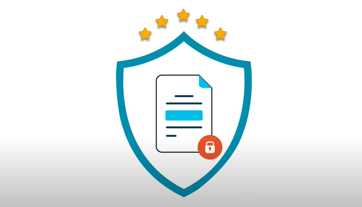The IP contained within standards is valuable, it needs to be protected. SDOs must recognize the importance of DRM software to safeguard content.
Common Misconceptions About DRM - And How Vitrium Proves Them Wrong
Digital Rights Management (DRM) has long been misunderstood. For many organizations and individuals, the term brings to mind outdated restrictions, clunky access methods, and frustrated end users. But modern DRM solutions have evolved significantly, and Vitrium is at the forefront of this transformation.
In this article, we’ll explore four of the most common misconceptions about DRM and explain how Vitrium DRM offers a smarter, user-friendly alternative that balances strong content protection with a seamless user experience.
1. DRM Hampers End User Experience
Many people associate DRM with complex downloads, required plugins, or limited access options. Many legacy DRM systems often require users to install proprietary software, download specific viewers, or adhere to rigid technical requirements, making access inconvenient and frustrating.
✅ How Vitrium Proves It Wrong
Vitrium DRM eliminates these barriers with plugin-free, browser-based access. Authorized users can view protected content directly in their preferred web browser, and on any device, without the need for special downloads. Whether they’re accessing PDFs, videos, or other digital files, the process is intuitive, responsive, and seamless.
This approach maintains high-level security without compromising usability, making Vitrium an ideal solution for organizations that value both protection and accessibility.
2. DRM Is Only for Preventing Piracy
While preventing unauthorized sharing is one of DRM’s primary purposes, it’s far from the only one. Many believe DRM only serves to “lock down” content, but a well-designed DRM system provides a wide range of capabilities beyond piracy prevention.
✅ How Vitrium Proves It Wrong
Vitrium offers a robust set of features that support compliance, licensing, usage tracking, access control, and secure distribution. Its DRM policies allow administrators to control who can access content, for how long, from which devices or locations, and under what conditions (e.g., view-only, print-allowed, expiration dates, etc.).
In industries such as education, associations, publishing, and professional training, DRM is often used to support monetization models, manage membership content, meet data protection regulations, and track user engagement, not just to stop leaks.
3. DRM Is Difficult to Manage or Scale
Another misconception is that DRM systems are hard to implement and time-consuming to manage, especially across large volumes of content or users. Organizations may hesitate to adopt DRM due to concerns about IT complexity or administrative overhead.
✅ How Vitrium Proves It Wrong
Vitrium DRM is built with scalability and automation in mind. The platform includes:
-
Reusable DRM policies to apply consistent rules across multiple files
-
User group management for efficient access control
-
Integration-ready APIs and webhooks for automating workflows
-
Bulk import and batch protection tools to streamline large-scale deployments
With these capabilities, organizations can apply protection, manage users, and monitor usage at scale, all while reducing manual workload.
4. DRM Is Exclusive for PDF Files or eBooks
Many assume DRM is only relevant to publishers distributing digital books or PDF files. While PDFs are a major use case, modern DRM has expanded to meet the needs of diverse content types and industries.
✅ How Vitrium Proves It Wrong
Vitrium supports multimedia content protection, including:
-
PDF files
- Documents
- Excel files
-
Videos and audio files
-
Images and presentations
Vitrium can protect overThis flexibility makes Vitrium suitable for training providers, research institutions, associations, standards organizations, and corporate content creators, all of whom distribute sensitive or monetized digital content in various formats.
The Future of DRM: Security + Usability
The long-standing belief that Digital Rights Management must sacrifice end user experience for the sake of security is increasingly being disproven by modern solutions. Vitrium DRM is a prime example of this evolution.
Today, content protection no longer needs to be an obstacle. In fact, the most effective DRM solutions are those that enhance security while remaining invisible to the end user. This balance is especially crucial in a digital-first world, where content is expected to be both accessible and secure, regardless of where or how it is consumed.
Redefining the Balance
Vitrium challenges the outdated trade-off between usability and protection by offering:
-
Browser-based access with no need for end-user downloads or plugins
-
Mobile-optimized viewing, ensuring a consistent experience across smartphones, tablets, and desktops
-
Granular access control settings, allowing organizations to define who can access what content, from where, and under what conditions
-
Intelligent usage tracking, giving administrators insight into user behaviour without interrupting workflows
These features are not just about making DRM more palatable, they’re about redefining what DRM can and should be in a modern content strategy.
Why This Matters for Today’s Organizations
In industries ranging from publishing and education to corporate training, research, and associations, digital content is not just an asset, it’s often a core product. But if that content is difficult to access, even legitimate users may disengage, leading to:
-
Decreased content adoption
-
Increased support requests
-
Loss of revenue or engagement
With Vitrium DRM, organizations don’t have to choose between protecting their intellectual property and delivering an excellent user experience. The platform’s intuitive access model, combined with robust policy enforcement, means you can monetize, distribute, and scale your digital assets confidently, without alienating your audience.





